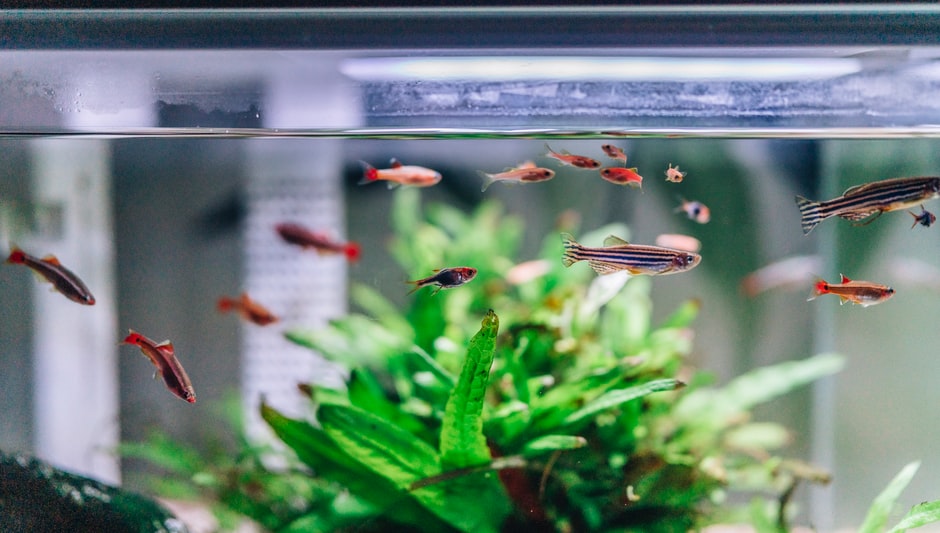A reading of. 05 mg/L of toxic ammonia (NH3) is at the very edge of safety for any aquarium. If the aquarium is kept at a temperature of 21C and a pH of 6.5, the total ammonia compounds can be reached. If the levels are not high enough, they will not survive.
The best way to determine the level of ammonia in your tank is to use a test kit. These kits are available at most pet stores and online. You can also order them from your local aquarium supply store. How to Determine the Level of Ammonia in Your Aquarium: . 05mg/l of NH3 is a safe level for most aquariums.
However, if you have a tank with a high ammonia level, you may want to reduce the amount of ammonium you add to your aquarium to make sure that your fish do not die from ammonia poisoning.
Table of Contents
How do I know if my fish tank has too much ammonia?
Gasping at the surface It is very common for some fish to come on the surface but if you notice your fish is coming on the surface very frequently then this could be because your tank is too small or you are not getting enough light. If you have a small tank then you may need to increase the size of the tank.
You can do this by adding a few more plants to the aquarium. If you do not have any plants in your aquarium then it may be a good idea to buy some plants from a garden centre or a local fish store. These plants can be used to add some colour and texture to your water.
Does aeration remove ammonia?
Aeration also reduces ammonia levels through physical means. The process of desorption decreases ammonia levels in wastewater. This process is called “dewatering.” In the United States, the most common form of aeration is the use of reverse osmosis (RO) water treatment systems. These systems are designed to remove dissolved solids, such as ammonia, from water through a series of filtration and purification steps.
In addition to removing ammonia from wastewater, RO systems can also remove nitrates, phosphates, and other heavy metals, as well as bacteria and viruses. Because of this, they are often used to treat large amounts of wastewater. However, because of their high cost, these systems have not been widely used in the U.S. for many years.
Does water conditioner remove ammonia?
The 2 products are not very different. The only difference is the amount of time it takes to do the job. How to Use a Water Conditioner for Nitrite and Ammonia Problems The first thing you need to know is that you can’t just add water to the tank and let it sit for a few days.
If you do that, the ammonia will start to build up in the water and you’ll have to start the process all over again. That’s why it’s so important to make sure your water is properly conditioned before you add it to your tank.
Does tap water have ammonia?
Chloramine is formed by the combination of ammonia and chlorine. This compound is added to our tap water in order to keep it clean and safe for us to drink, but if it gets into our drinking water, it won’t make a difference. The problem with chlorine is that it is extremely toxic to aquatic life. Chlorine is a potent neurotoxin that can cause brain damage and even death in very small amounts.
In fact, the World Health Organization (WHO) has stated that “chlorine poisoning is the leading cause of death among children under 5 years of age in the world” and “chronic exposure to low levels of chlorine can result in irreversible damage to the central nervous system, including paralysis, seizures, coma, and death.” The U.S. Centers for Disease Control and Prevention (CDC) states that chlorine “is a known human carcinogen and has been shown to cause cancer in laboratory animals.”
In addition, chlorine has also been linked to a number of other health problems, such as kidney and liver damage, skin irritation, eye irritation and skin rashes.
What creates ammonia in a fish tank?
The major waste product of fish is ammonia, which is formed from the metabolism of protein. Most of the ammonia from fish is lost through the gills, but relatively little is lost through urine and feces. Ammonia can be formed in the stomach or intestines of animals. In addition to ammonia, fish also produce a number of other waste products.
These include ammonia gas (NH 3 ), nitrite (NO 3 -), nitrate (N 2 O), hydrogen sulfide (H 2 S), and carbon dioxide (CO 2 ). Nitrite is a colorless, odorless gas that is produced when ammonia reacts with nitric acid. Nitrate is an ammonia-forming compound that occurs naturally in some fish and can be used as a food additive. Carbon dioxide can also be produced by fish, but it is not used for food.
Is 1.0 ppm ammonia aquarium?
Levels above 1.0ppm of ammonia or nitrite could be harmful to the health of your fish and should not be allowed in the aquarium. Nitrite is a naturally occurring chemical that can be found in many foods. It is used as a preservative in some foods and as an anti-oxidant in others. Nitrite can also be produced by the bacteria that live in your aquarium, but it is usually not present in high enough concentrations to cause any harm.
However, the presence of high concentrations of nitrate can lead to a condition known as nitrifying bacteria, which can cause a variety of health problems in fish, especially those that are sensitive to nitrates. If you are concerned about nitrification, you may want to check with your local fish store to see if they have a product that is specifically formulated to prevent the growth of these bacteria.
